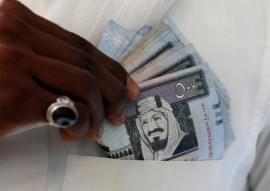
The government appears to be concerned only about boosting its earnings and has obviously succeeded on this front as it has increased electricity tariffs substantially but on the other side failed to improve supplies and further open the sector for private participation in line with a programme agreed with the donors.
According to an understanding reached with multilateral donors like the Asian Development Bank (ADB), World Bank and Japan International Cooperation Agency (Jica), Pakistan would push down the cost of power subsidies, bring improvement in the overall power sector and ensure transparency, say sources.
Following this commitment, power tariff was increased in October last year and subsidies were restricted to the consumers using up to 200 units per month. Tariff slabs were also scrapped, leading to a 54% rise in electricity prices.

However, no significant measures were undertaken to arrest higher transmission and distribution losses and plug leakages as losses went up with a decline in the recovery of monthly bills.
According to a report submitted to the cabinet a few months ago, the collection of bills for electricity consumption fell from 90% in 2012-13 to 80% in the following year.
Receivables of power companies also rose Rs100 billion to Rs484 billion in one year. The private sector owed Rs375.181 billion to power distribution companies, of which Rs137.144 billion had accumulated over the last one to three years.
For the past 12 months, Rs97.93 billion had been outstanding, for which the distribution companies were tasked with making the recoveries.
Since the PML-N government took over in June last year, acting heads have been running the power companies on a temporary basis.
Rather than finding solutions, the government has turned to giving up control of the companies by privatising highly efficient ones like the Islamabad Electricity Supply Company (Iesco) and Lahore Electricity Supply Company (Lesco) where line losses are significantly lower compared to the national average.
In an effort to tackle acute electricity shortages, the Council of Common Interests (CCI) – an inter-provincial body – prepared the National Energy Power Policy 2013 on July 27 last year. Under the policy, different action plans were formulated covering up to one year, one to three years and three to five years.
These developments came under discussion during a meeting of the Economic Coordination Committee (ECC) of the cabinet held on December 24.
Representatives of the ADB, World Bank and Jica also visited Pakistan as a joint mission to discuss the Development Policy Credit for the energy sector.
The Ministry of Finance, in association with the Ministry of Water and Power, engaged in crucial working sessions with the mission for framing a programme covering the policy areas. These included managing power tariff and subsidy; improving the sector’s performance and opening the market to private participation; and accountability and transparency.
ECC members disclosed that work on the policy areas was being undertaken in five phases. First phase was completed in January 2014 and the second phase would come to an end by December 31, 2014.
A report would be presented to the ECC every quarter underlining the progress made on various activities under the programme. The committee reviewed a quarterly report and gave its endorsement to the performance under the first two phases. It also approved the public disclosure of the performance made so far.
Published in The Express Tribune, January 1st, 2015.
Like Business on Facebook, follow @TribuneBiz on Twitter to stay informed and join in the conversation.
COMMENTS (1)
Comments are moderated and generally will be posted if they are on-topic and not abusive.
For more information, please see our Comments FAQ



1732883922-0/diddy-(48)1732883922-0-165x106.webp)


1732882586-0/Express-Tribune-(7)1732882586-0-270x192.webp)










All in all. .Just nonsense.
Losses are up and prices is up.. Simple as that